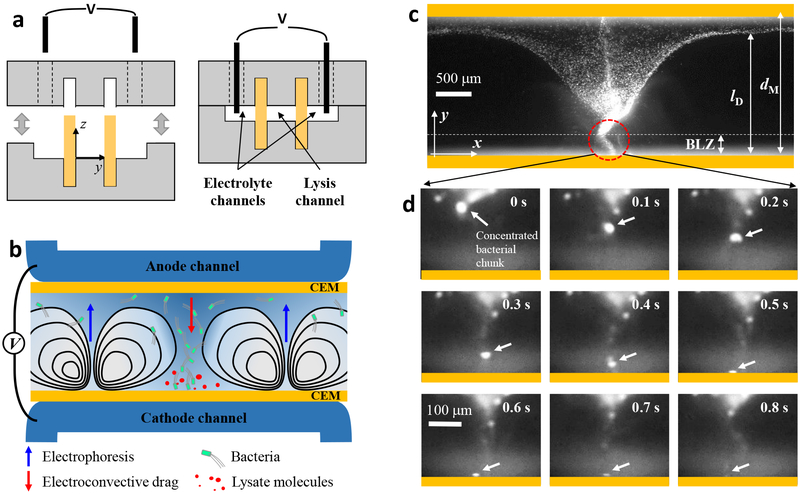Figure 1.
Working principle of electromechanical lysis of bacterial cells. a, Fabrication of membrane-integrated microfluidic devices. The top and bottom PDMS blocks were prepared with microchannels (height, h= 250 μm) and high-aspect-ratio membrane slots (thickness, tslot= 0.45 mm, hslot= 3.5 mm) where two CEMs (tMem= 0.45 mm, hMem= 7 mm) were inserted, followed by an irreversible bonding process. b, Schematic illustration to describe principle of the electromechanical lysis for bacterial cells using electroconvective vortices. The ICP phenomena forced bacterial cells to be concentrated into a small spot between vortices and delivered the cells toward the cathodic CEM where the cells underwent electrical permeation and mechanical shearing, resulting in the release of intracellular molecules. c,d, Microscopic observation of the electromechanical lysis at bacterial lysis zone (BLZ). Bacteria cells were first aggregated each other and then experienced a rapid and unstable electro-convectional shearing and mechanical bombardment by the CEM, leading to bacterial lysis within a second.

